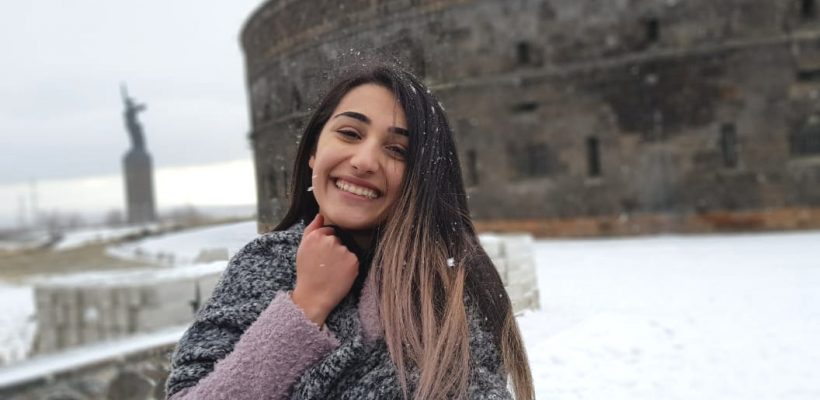
Susanna Avagyan: What Happened After the Earthquake
3 min readContributed by Susanna Avagyan (BS DS ‘22)
Thirty-one years ago on December 6th, it was a cold winter day in Gyumri. Life was going on as usual and no one knew what would happen to them the very next day. I don’t want to tell you about what happened the next day, as all of us know the story very well. I want to talk about what happened after the earthquake, one year, two years, thirty-one years later. The earthquake caught the attention of many governments, international organizations, and individuals. People sent aid in any way they could: food, clothing, and equipment; and many came in person to help the victims. Yet others aimed at making a much longer-term impact. And what is one of the best fields to invest in for a long-term impact? Of course, education.
The founders of AUA believed that a country which had suffered from such a tragedy can be put back on its feet only by well-educated individuals. The collapsed present could be built up to a bright future only by a generation who had the skills and knowledge to be powerful again.
I remember the day when, as a student of an English-specialized school named after Lord Byron, I was invited along with my teacher to AUA Extension in Gyumri. There, I met Dr. Armen Der Kureghian, then president of AUA, for the first time. We had a short conversation and he said that he would be happy to see me in AUA to further my studies. At that time, the idea sounded so distant, so unreal for a girl from a region. But it is not anymore.
Now I represent the diverse student body of the amazing AUA community. Young and bright individuals from all over Armenia and also from outside its borders are here getting a quality education today to become the leaders of tomorrow. And all of us – I from Gyumri, Marieta from Spitak, Naira from Yerevan, Shantal from Beirut – are here to become the next successful data scientists, engineers, entrepreneurs, teachers and professors. We embody the success of the mission and the goals the founders had in their minds when they started to build this university from scratch.
I am sure most of you have heard about the “butterfly effect,” according to which a small action in one part of the world triggers a similar action on the opposite side of the world. So, wherever life takes us, the great initiative realized by the founders of AUA 28 years ago will be carried forward by us. And life will take us to different places, but for me, Gyumri is certainly one of the most important destinations.
I see Gyumri flourish day by day. Streets and buildings are shaking off the dust of the earthquake along with its tragic memories. After the earthquake, the city is living and breathing again. Especially technological advancement is flourishing in the city. Who knows, maybe Gyumri will become the Silicon Valley of Armenia! People also are changing. They have started to believe in themselves again. To believe in the potential that was lost under the shadow of the tragedy.
My heart is full as I realize that at AUA we are not only mourning the loss of the innocent victims of the earthquake today, but also looking ahead to opportunities for development, advancement, and innovation.
It is amazing to realize that something that tragic has given birth to something this wonderful. I guess the founders of AUA knew very well what they were doing, as their investment is now forever linked to Gyumri, Armenia, and all of us.
Susanna Avagyan is a sophomore student at the American University of Armenia (AUA), currently earning her bachelor’s degree in Data Science. In 2018, she was awarded a Golden Medal of Excellence in Education from the then Ministry of Education and Science of the Republic of Armenia. She is actively involved in volunteerism and project management. Being from Gyumri, she is passionate about regional development. Her grant project “Citizen 2019: Be the change” was successfully held during the summer of 2019 in five regions of Armenia and involved series about democracy, active citizenship, regional development, and entrepreneurship.
